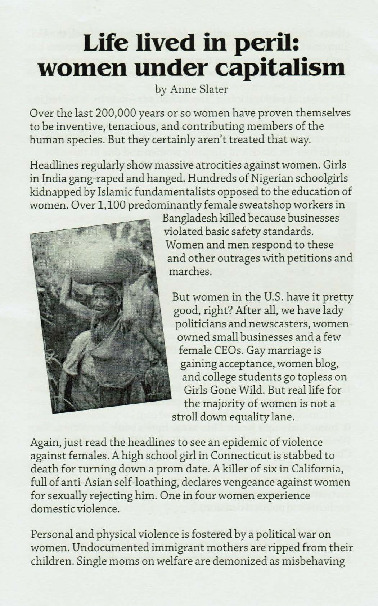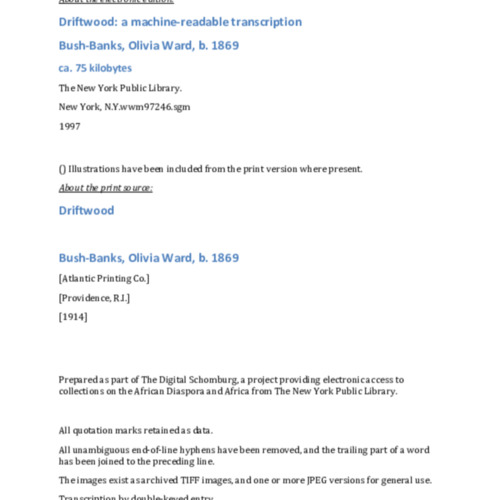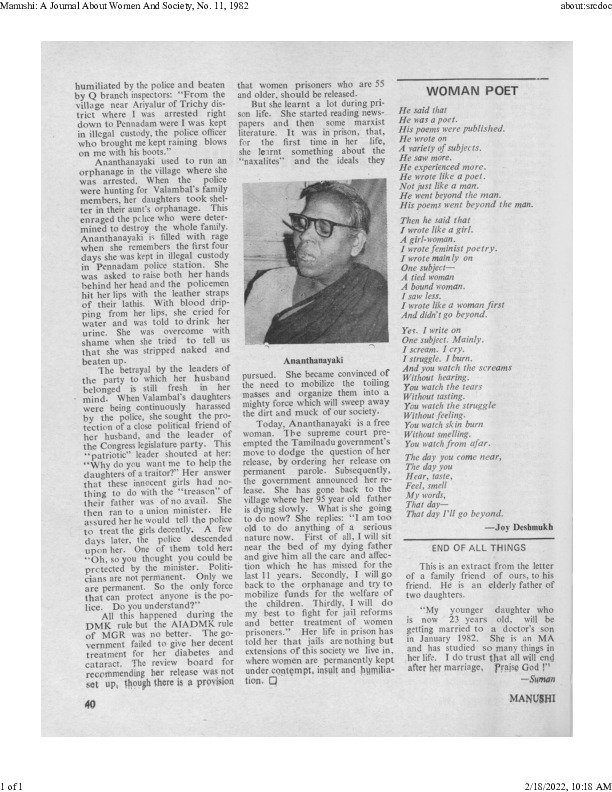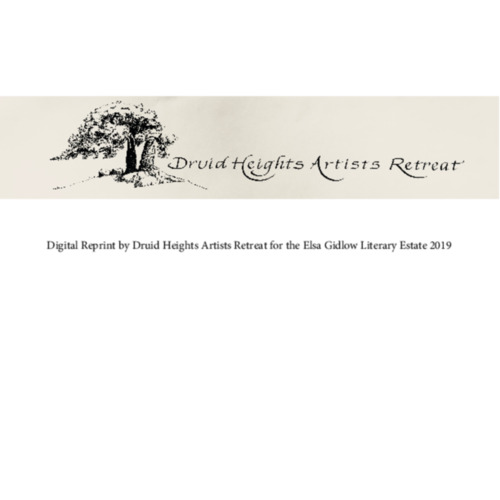Women in Poetry in the 19th and 20th Centuries
Curated by Tessa Denton
Women’s poetry has long been an invaluable social and political realm of forbidden self-expression and resistance. Historically, women have used poetry to call for change and make statements in politics – a realm from which they were firmly excluded – as well as within their social spheres to connect with others. Today, the importance of a medium in which women were able to use their voices in a world that silenced them cannot be understated, and it is vital to recognize the power that art such as poetry can have when women take advantage of it to speak. We just need to listen.
To establish some context, we can look to Life Lived in Peril: Women Under Capitalism by Anne Slater, a brochure detailing the exploitation and oppression of women throughout history. This four-page piece explains that patriarchal power and its legacy remain relevant today and has centuries of precedent. The brochure also touches on the rise of the feminist movement, and the following artifacts will make clear that feminism and activism take many forms under patriarchy, and poetry is one of them.
This collection, simply titled Original & Selected Poetry, created by Amy Matilda Cassey, consists of artistic contributions by twenty-five people, fourteen of which were women. The pieces were originally published between 1833 and 1856 and explored topics such as slavery, friendship, religion, and mortality. While the most recognizable name today on the list of contributors is Frederick Douglass, many were prestigious Black women active in abolitionist spaces, including the collection creator; these women used poetry as a medium for discussing politics and human rights – spaces where Black women specifically were often denied access.
These two artifacts are collections of poetry written by Women of Color.
Magnolia leaves: poems is a collection by Mary Weston Fordham which, while primarily about religion, also explored topics like the loss of childhood in “On Parting With a Friend,” gender roles in “The Coming Woman,” and class in “The Washerwoman.” Fordham was born free, ran her own school during the Civil War, and went on to continue teaching during the Reconstruction Era.
The second artifact is Driftwood, a poetry collection by Olivia Ward Bush that explored themes such as the struggle of freed Black people after emancipation from slavery in “Unchained” and moving forward amidst grief in “Voices.” Bush was a poet, author, and journalist of both African American and Native American heritage, a background that greatly influenced her work.
These artifacts are just two examples of Women of Color who used art to express perspectives born from their unique experiences navigating the world. As Booker T. Washington stated in his introduction to Fordham’s Magnolia leaves: poems, “I believe [this poetry collection] will do its part to awaken the Muse of Poetry which I am sure slumbers in very many of the Sons and Daughters of the Race of which the Author of this work is a representative.” The very act of sharing their work took great tenacity and strength and, no doubt, had ripple effects in their communities.
Shown below are two poems over 150 years apart that demonstrate self-awareness of womanhood within their societies.
The first, “An Appeal to Women” by Sarah Louisa Forten – a Black abolitionist and feminist who co-founded an anti-slavery newspaper The Liberator – calls for women of all races to work together to abolish slavery. This poem having been published in 1832, decades before slavery would be abolished in the United States, is an incredible representation of how the relationship between female suppression and white privilege were and still are playing out. Many may recognize this as what we now call intersectionality. In calling for white women to ally themselves with their enslaved and oppressed “sisters,” Forten makes an extremely strong statement that resonates today.
The second poem, “Woman Poet” from 1982, is by Dr. Joy Deshmukh Ranadive, an Indian economist, gender specialist, teacher, and writer. She powerfully captures the misogynistic attitudes toward women writers and combats it with a raw honesty of how her poetry draws from her pain and experiences.
The last poetry collection, On A Grey Thread by Elsa Gidlow, was published in 1923 and is believed to be the first volume of lesbian love poems ever printed in North America. Gidlow also started the first gay and lesbian magazine on the continent. Considering the erasure of lesbianism that continues to this day, recognizing the history of lesbians in poetry and how that poetry served as activism is deeply important.
Our final poem, “Lesbian Moan” by Terri L. Jewell, a Black lesbian activist, was published in a magazine in 1983 and pairs interestingly with Gidlow’s work in understanding the continued presence of lesbian poetry and the longevity of relying on art such as this to express queer sentiment. Specific to this poem, Jewell explores Black lesbian loss in an acknowledgment of feelings that, for so long, have been largely inexpressible due to social stigma and oppression.
It is clear in looking back at history that the ability to access or express one’s own words is a privilege that can be used to cause great harm and good alike. This exhibit is merely an introduction to the huge world of the history of women’s poetry, a field frequently understudied. There is power and beauty in recognizing their presence across many contexts, from antislavery movements to queer visibility to the daily life of a Black woman in the late 1800s. Women, especially Women of Color, have historically been experts at using poetry to send powerful messages into their social surroundings and to create community with forbidden sentiments through the ineffable power of words.
Artifact Citations
Bush, Olivia Ward. “Driftwood,” 1914. New York Public Library, https://www.nypl.org/research/research-catalog/bib/b13082333?originalUrl=https%3A%2F%2Fcatalog.nypl.org%2Frecord%3Db13082333~S67. Accessed 20 February 2022.
Cassey, Amy Matilda. “Original & selected poetry,” 1833-1856. The Library Company of Philadelphia, https://digital.librarycompany.org/islandora/object/Islandora%3A64815#page/17/mode/1up. Accessed 20 February 2022.
Deshmukh Ranadive, Joy. “Women Poet,” 1980. Alexander Street, https://search-alexanderstreet-com.offcampus.lib.washington.edu/view/work/bibliographic_entity%7Cdocument%7C3553721#page/42/mode/1/chapter/bibliographic_entity%7Cdocument%7C3553722, Accessed 20 February 2022.
Fordham, Mary Weston. “Magnolia leaves: poems,” 1897. New York Public Library, https://www.nypl.org/research/research-catalog/bib/b11690392?originalUrl=https%3A%2F%2Fcatalog.nypl.org%2Frecord%3Db11690392~S67. Accessed 20 February 2022.
Forten, Sarah Louise. “An Appeal to Women,” 1832. Poetry Foundation, https://www.poetryfoundation.org/poems/52144/an-appeal-to-women. Accessed 5 March 2022.
Gidlow, Elsa. “On a Grey Thread,” 1923. GLBT Historical Society museum & archives, via the Internet Archive, https://archive.org/details/OnAGreyThread/page/n23/mode/2up. Accessed 20 February 2022.
Jewell, Terri. “Lesbian Moan,” 1984. GLBT Historical Society museum & archives, via the Internet Archive, https://archive.org/details/glbths- periodicals-onyx-augsept-84-001/GLBTHS_periodicals_Onyx_augsept84_007.jpg. Accessed 20 February 2022.
Slater, Anne. “"Life Lived in Peril: Women Under Capitalism,” 2014. Feminism Community Archive of Washington, https://cdm16786.contentdm.oclc.org/digital/collection/p16786coll12/id/395/rec/1. Accessed 20 February 2022.
Further References
“Dr. Joy Deshmukh Ranadive.” LinkedIn, https://in.linkedin.com/in/dr-joy-deshmukh-ranadive-949a06121. Accessed 8 March 2022.
“Mary Weston Fordham.” Poetry Foundation, https://www.poetryfoundation.org/poets/mary-weston-fordham. Accessed 8 March 2022.
“Olivia Ward Bush-Banks Biography.” Encyclopedia of World Biography, https://www.notablebiographies.com/supp/Supplement-A-Bu-and-Obituaries/Bush-Banks-Olivia-Ward.html. Accessed 8 March 2022.
"Purvis, Sarah Forten (C. 1811-C. 1898)." Encyclopedia, https://www.encyclopedia.com/women/encyclopedias-almanacs-transcripts-and-maps/purvis-sarah-forten-c-1811-c-1898. Accessed 8 March 2022.
Archives Accessed
The following archives are directly or indirectly from an approved list or were otherwise approved.
The Library Company of Philadelphia
Internet Archive via the GLBT Historical Society museum & archives
About the Curator
Tessa Denton is a student at the University of Washington, Bothell, majoring in Culture, Literature, and the Arts and in Gender, Women, and Sexuality Studies.
Acknowledgments
Thank you to Dr. Julie Shayne, Denise Hattwig, Penelope Wood, and Jesse Blaire for their amazing assistance and direction.







